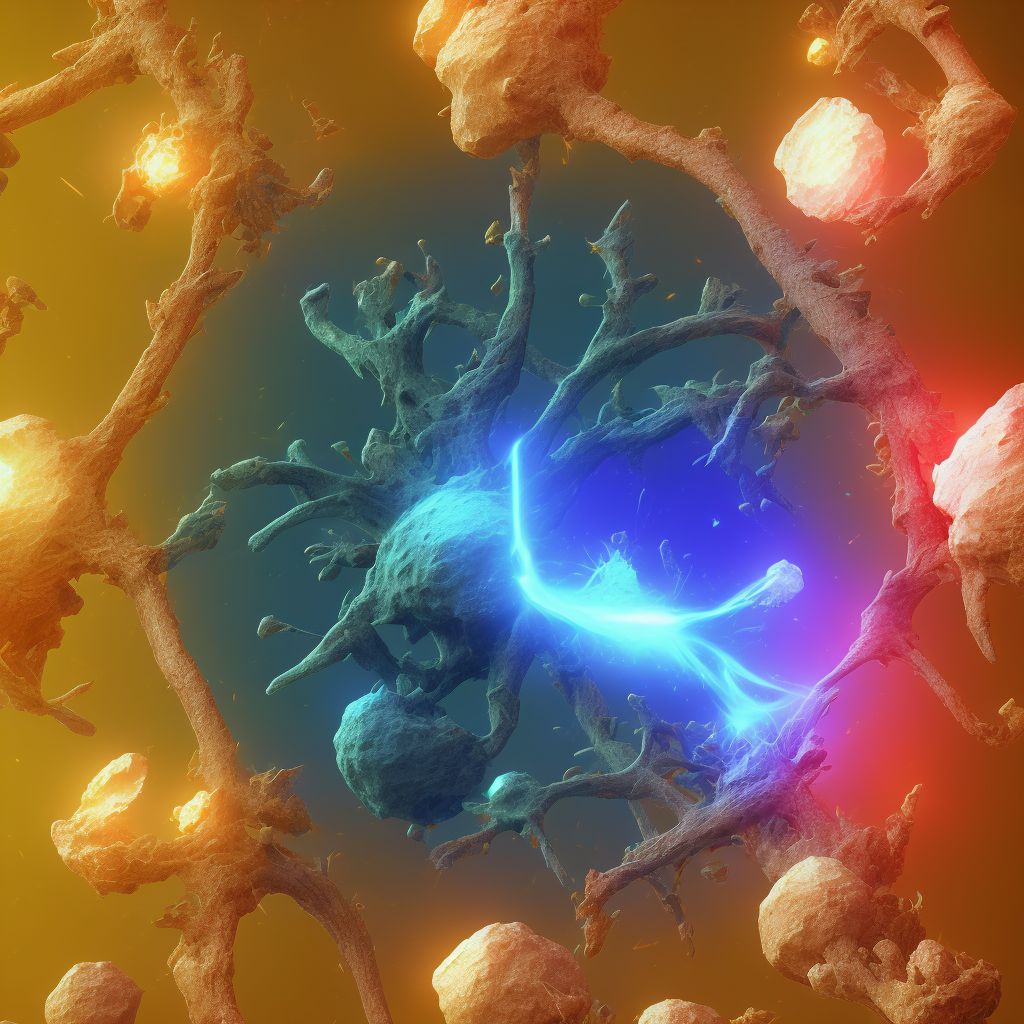
Nondisplaced fracture of proximal phalanx of left little finger Save
ICD-10 code: S62.647
Chapter: Injury, poisoning and certain other consequences of external causes
Nondisplaced Fracture of Proximal Phalanx of Left Little Finger: Symptoms, Causes, and Treatment
A nondisplaced fracture of the proximal phalanx of the left little finger is a type of finger fracture that occurs when the bone in the finger is partially broken but still in place. This type of fracture is common and can be caused by a variety of factors, including trauma, overuse, or repetitive stress.
Some of the common symptoms of a nondisplaced fracture of the proximal phalanx of the left little finger include pain, swelling, and stiffness in the finger. In some cases, the finger may also appear deformed or crooked.
If you suspect that you have a nondisplaced fracture of the proximal phalanx of your left little finger, it is important to seek medical attention right away. Your doctor will likely perform a physical examination and may order imaging tests, such as X-rays or CT scans, to determine the severity of the fracture and develop an appropriate treatment plan.
- Rest and Immobilization: One of the most common treatments for a nondisplaced fracture of the proximal phalanx of the left little finger is rest and immobilization. Your doctor may recommend that you wear a splint or cast to keep the finger immobile while it heals.
- Pain Management: Your doctor may also recommend over-the-counter pain medications, such as acetaminophen or ibuprofen, to help manage pain and reduce swelling.
- Physical Therapy: In some cases, your doctor may recommend physical therapy to help restore strength and mobility to the finger after the fracture has healed.
- Surgery: In severe cases, surgery may be necessary to repair the fracture and restore normal function to the finger.
Overall, the prognosis for a nondisplaced fracture of the proximal phalanx of the left little finger is good with proper treatment. Most patients can expect to make a full recovery within a few weeks to a few months, depending on the severity of the fracture and the type of treatment received.
In conclusion, if you suspect that you have a nondisplaced fracture of the proximal phalanx of your left little finger, it is important to seek medical attention right away. With proper treatment, you can expect to make a full recovery and regain normal function of your finger.
Diagnosis Codes for Nondisplaced fracture of proximal phalanx of left little finger | S62.647
- S62.647A, Nondisplaced fracture of proximal phalanx of left little finger, initial encounter for closed fracture
- S62.647B, Nondisplaced fracture of proximal phalanx of left little finger, initial encounter for open fracture
- S62.647D, Nondisplaced fracture of proximal phalanx of left little finger, subsequent encounter for fracture with routine healing
- S62.647G, Nondisplaced fracture of proximal phalanx of left little finger, subsequent encounter for fracture with delayed healing
- S62.647K, Nondisplaced fracture of proximal phalanx of left little finger, subsequent encounter for fracture with nonunion
- S62.647P, Nondisplaced fracture of proximal phalanx of left little finger, subsequent encounter for fracture with malunion
- S62.647S, Nondisplaced fracture of proximal phalanx of left little finger, sequela